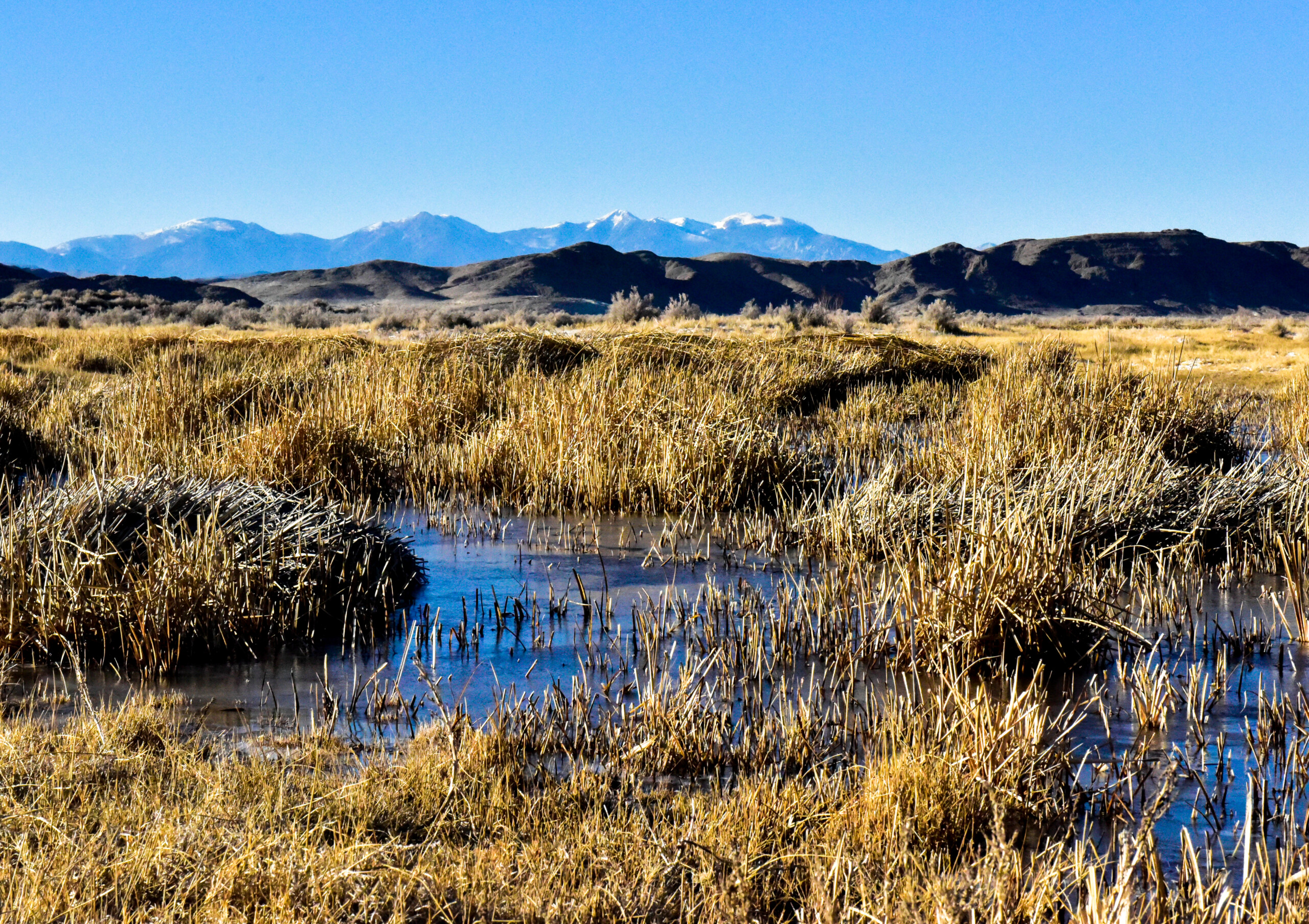For Immediate Release
Contact: Kyle Roerink, Executive Director
Great Basin Water Network
702-324-9662
kyleroerink@greatbasinwater.org
BLM ISSUES A MAJOR SETBACK TO IRON COUNTY WATER GRAB
Baker, NV –– Opponents of the proposed Cedar City Pipeline and Water Grab released the following statements after the Bureau of Land Management (BLM) recently decided to pause the environmental review for the dangerous project.
The decision from the federal government is a major setback for the Central Iron County Water Conservancy District’s plans to export rural groundwater along the Utah-Nevada border to Cedar City. The multi-phase proposal –– tapping Pine, Wah Wah and Hamlin Valleys in that respective order –– would impact groundwater flow systems near Great Basin National Park and groundwater systems connected to the Great Salt Lake. USGS modeling shows the project impacting resources in Beaver, Millard, Juab, White Pine (NV) counties and, ultimately, the Great Salt Lake groundwater systems.
“An official pause on a major project like this is rare,” said Kyle Roerink, executive director of the Great Basin Water Network. “Our scientific and legal analysis of the DEIS highlighted the high likelihood of grave impacts damaging special ecosystems, tribal rights, farmers, and rural communities. GBWN will continue to bring together unlikely allies to put the final nails in this water grab’s coffin.”
In early 2022, the BLM released a Draft Environmental Impact Statement (DEIS) as part of the requisite review for a Right of Way on federal land to accommodate Phase 1 of the project. GBWN and partners helped mobilize nearly 10,000 comments on the DEIS that addressed invalid monitoring, management, and mitigation plans that would not adequately protect senior rights and the public interest. A release of a Final Environmental Impact Statement is now uncertain.
“Beaver County will continue to protect our residents’ rights under the law,” said Beaver County Commissioner Tammy Pearson. “We still have a long way to go, but this demonstrates the severity of our concerns.”
The first phase of the project in Pine Valley would directly impact the water of the Indian Peaks Band of the Paiute Tribe of Utah, which maintains water rights in Pine Valley that were not considered by federal, state or local officials in the development of the project.
“We are pleased with the BLM’s decision but know that the work necessary to protect our interests is far from over,” said Tamra Borchardt-Slayton, chairwoman of the Indian Peaks Paiute Band. “There was never proper consultation between tribal bands and the federal government –– nor was there any meaningful recognition of the tribes’ history and rights in our homelands in the DEIS. As Iron County promotes inland ports and other rapid-growth proposals, they need to focus on sustainable water management rather than taking from communities in irreparable ways.”
EVERYONE IN THE GREAT BASIN HAS SOMETHING TO LOSE
On Paper, the project has 27,000 acre-feet of water rights in Pine Valley (15,000 afy) and Wah Wah Valley (12,000 afy) –– granted via a questionable settlement agreement in early 2019. Additionally, CICWCD has applications for another 10,000 acre feet of water rights in Hamlin Valley. GBWN and its rural allies will be taking more action to address concerns about the state-issued water rights.
This massive project will tap into the headwaters of the Great Salt Lake’s aquifer system and the heart of the Great Basin. There is nothing great about CICWCD’s pipeline.
- Water is not available. The combined recharge of Pine and Wah Wah Valley is less than 14,000 acre-feet per year, according to the USGS. The Pine Valley pumping alone will have dramatic effects on the water table.
- Iron County residents will pay the price. By its own internal estimates, CICWCD water bills will increase by 700 percent in Iron County (pre-inflation figures).
- The project will mine the region’s groundwater. According to the USGS, if there’s 15,000 afy pumping in Pine Valley and 6,500 afy in Wah Wah Valley, the water table in both valleys will drop by at least 1,500 feet. Neighboring basins like Snake Valley, home to Great Basin National Park, will also experience huge declines.
- Utah’s Millard, Juab, Tooele, and Salt Lake Counties will be hit –– and White Pine County, NV. Three underground flow systems that feed the Great Salt Lake will be affected. Snake Valley, Tule Valley, Sevier Desert, Fish Springs Flat, Milford, Beryl-Enterprise and other valleys will be hit.
- The project is not in the public interest. Pumping in Pine and Wah Wah Valleys will have a 10,000 square-mile impact throughout Nevada and Utah, according to the USGS, having a regional impact on underground flow systems throughout the Great Basin and senior water rights.
- The project will even harm Iron County. The USGS estimates that the first two phases of the project will drop the water table in Beryl-Enterprise by more than 1,000 feet.
-30-

